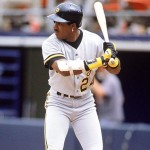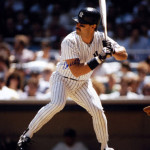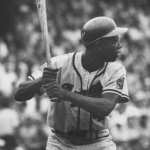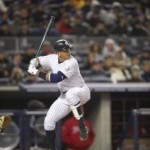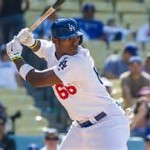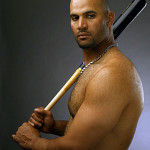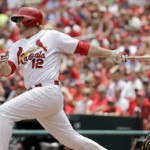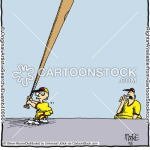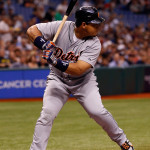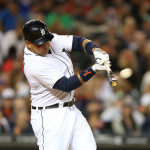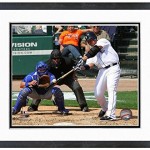How could there be a greater looking Baseball Player than Mike Trout? 
Not only does his face and body “talk-the-talk”, but already his ability and demeanor 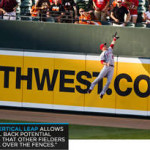
 have proven, to even the most “cynical” of critics, that he is quite capable of ‘Walking-the- Walk”.
have proven, to even the most “cynical” of critics, that he is quite capable of ‘Walking-the- Walk”. 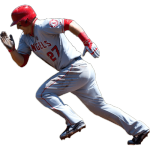 There isn’t any thing on the baseball field, or any “playing field”
There isn’t any thing on the baseball field, or any “playing field”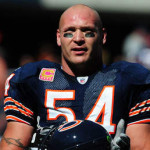 , that he isn’t capable of doing to the highest level of performance. The only aspect of his game that I (personally) wish that he would change is his penchant for sliding “head-first” into bases.
, that he isn’t capable of doing to the highest level of performance. The only aspect of his game that I (personally) wish that he would change is his penchant for sliding “head-first” into bases.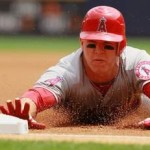 I say this for the “selfish” reason of my being deprived of seeing him play when he is on the “disabled list” with jammed or broken fingers, hands, arms, neck, or some other upper body injury that is sure to occur at some time or other.
I say this for the “selfish” reason of my being deprived of seeing him play when he is on the “disabled list” with jammed or broken fingers, hands, arms, neck, or some other upper body injury that is sure to occur at some time or other.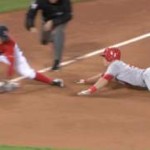 I know he can slide feet first
I know he can slide feet first  , so why not and lessen the
, so why not and lessen the 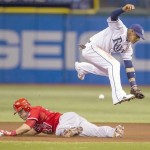 injury potential.
injury potential.
Since this article is primarily on “Batting Proficiency”, I will henceforth cease from the voluminous rhetorical references to Trout’s superlative abilities in areas of running, fielding, throwing, base-stealing, hustle, team-spirit, universal fan-appeal, and commercial notoriety, etc., etc.
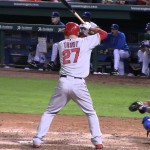

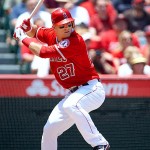
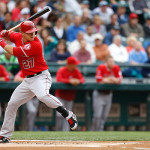
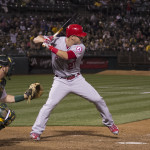
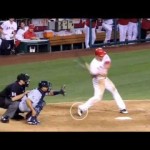
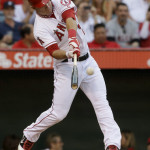
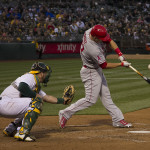
Mike Trout seems to be a good hitter, not only from a phenomenal standpoint (big, strong, and quick reflexes), but also gives the appearance of being a “smart-hitter”(knowing what to look for in the “count”). He doesn’t seem to find himself at a disadvantage by taking the Pitcher’s first-pitch fastball for a strike (at least much of the time). Because he can easily go to the opposite field, most pitchers can’t slip a fastball by him, nor can they “off-speed” him away (normally). Even with his “leg-kick” stride, which usually leaves a batter vulnerable to off-speed pitches, he generally stays with a pitch in the strike-zone, and with his short, quick swing is able make solid contact (a good deal of the time), especially the low strike.
As I have described a “good-hitter” as a “smart-batter” who looks for a pitcher’s mistake, and capitalizes on it, and a “great-hitter” as “one” who can hit a pitcher’s best pitch with regularity, Mike Trout could easily fit into “both” categories. Right now I would describe him as a “good-hitter” normally, and a “great-hitter” when the Pitcher’s best pitch remains in the strike-zone (like Grienke’s perfectly placed outside corner fast-ball in the All-Star Game). He can legitimately take a first-pitch fastball right down the middle because he isn’t afraid of a pitcher’s awesome “breaking-pitch”. He can hit “anything in the strike-zone! But, when the pitch looks like it is coming over the plate, and breaks into the dirt, that is one of the only times he looks to be vulnerable as a batter. The only other time he appears to be vulnerable is on the high, inside fastball, a little above the strike-zone. ( That is because of his high stance and high bat, the position from which all his power is generated in downward direction, and toward the plate. On that high pitch his body drives his bat down under the ball on a majority of swings, or he is jammed. Most of the time he takes the high pitch, which attests to his astute judgment. )
The main reason he is vulnerable to those types of pitches is his “high leg kick”. Although it appears that he has terrific eyesight, any movement of the head and eyes is at least a “slight-margin-for-error” when a ball is thrown at speeds of 80 to 100 MPH while transcending innumerable horizontal planes. Since Trout has a keen eye and an almost flawless discernment of the “strike-zone”, the only reason he swings at hard sliders in the dirt (or away) is because his perception (as well as the “2-strike complex”) wrongly informs him that the pitch is about to be a “low-strike”. Before he realizes, he is swinging at a pitch outside or below the strike-zone. And the only reason for it is that for the moment his visual acuity was skewed.
The only practical reason for this momentary distorted view is the slight dis-lodgment of the mechanism for visual stability, the head and eyes, due to the high leg-kick stride and “glide” toward the plate. Novice fielders who have the occasion to chase fly-balls or pop-ups while running full-speed will verify how the ball sometimes seems to play tricks on them, and make them difficult to catch, because while running the head is usually bobbing and distorting their vision. “Hitting a baseball is the most difficult thing to do in all of sports” (because of all the variables to be put in order). So, would it not be reasonable to presume that any head movement, while batting, is a natural deterrent to the most efficient practice of hitting of a baseball?
Mike Trout (or any “good hitter”), if he would like to become a “Great Hitter”, would have to eliminate as many margins for error as would be possible. Mike’s biggest “margin for error” has to do with his lack of complete “visual acuity” because of two things: 1) his high bat and high-stance ; and 2) his high leg-kick stride
; and 2) his high leg-kick stride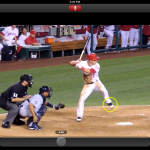
 . Since even the slightest degree of movement of head and eyes diminishes maximum efficiency to that same degree, the lateral, vertical, and horizontal movements that Trout’s body displays will degrade the accuracy of his swing to that same degree.
. Since even the slightest degree of movement of head and eyes diminishes maximum efficiency to that same degree, the lateral, vertical, and horizontal movements that Trout’s body displays will degrade the accuracy of his swing to that same degree.
It is reasonable to assume that Mike Trout (as well as Miguel Cabrera) could easily be considered a “great-hitter” because he has been known to hit the best of pitchers “best pitch” (Grienke in 2015 All-Star Game) on many occasions. Mike Trout may some day become a “Great-Hitter”, but because of his inconsistency in applying “perfect-mechanics” he is not yet as great as he would like himself to be.
Most (if not all) batters relegate themselves to vulnerability to the greatest “margin-for-error” in the entire batting regimen. What is the only way to assure oneself of readiness to swing his bat? The front foot must be planted! The only place where “timing” can be disrupted is in the stride. The batter never really knows when to put his foot down. Therefore, never pick up the front foot. Simply generate the needed momentum prior to swing by readying the hips to bring the shoulders, arms, and bat to the ball. By not striding, any batter will see the ball with utmost clarity, and allow for much better contact, no matter how strong he is.” But a player with the power and precision of a Mike Trout would eliminate the greatest deterrent to batting proficiency if he would not stride. If he never raised his front foot, his batting acumen would be closer to flawless!
One thing to always remember, when trying to appreciate the ultimate power of the swing, is that, once the front foot is planted firmly all power is initiated by quick turning of the hips instigated by the driving back bent-knee, the leg of which never straightens. This principle is elaborated upon in an article entitled, “Inertia: Power from the Back of the Bus”, dated 9/13/13, on this website, www.johnpaciorek.com.
If anyone was not convinced that Mike Trout is the Best “all-around” player in Major-League Baseball, then, the 2015 All-Star Game should have made that fact ultra-clear. Not only did he spark his American League team to victory with his “lead-off” Home Run in the first inning off the National League’s “premier-pitcher”, Zack Greinke, but with his subtle brilliance in other areas of play secured an historic honor of being the first Major-League player to win back to back MVP awards in the All-Star Games; and at the tender age of 23 years.
His performance in the All-Star Game is simply a “post-script” to the essay you have just read. His line-drive Home-Run to Right Field against Greinke demonstrated his ability on one “At-bat” to hit the “Best-Pitcher’s” best pitch (“on the ‘black’, out-side corner fast-ball”), while striking out his next time up on a “best” pitcher’s (Cole) hard, outside slider, completely outside the strike-zone. The “subtle-brilliance”, to which I referred earlier, is when Mike miss-hit a Clayton Kershaw pitch, and beat out what would have been an easy double-play to any one other than himself. He later scored, and helped ignite a rally that proved consequential to the Game’s outcome. The irony to this exceptionally honorific occasion is that it could’ve gone in a diametrically opposite direction if Greinke had thrown that, or any other, “best” pitch outside the strike-zone. The “gods” certainly do seem to favor Mike Trout, and rightly so – even if does “take a first-pitch fastball strike, right down the middle”.
There is no better Baseball player than MIKE TROUT! But if he would like to be the Game’s “Best Hitter”, he will have to do a little better job at “REDUCING – HIS – MARGINS – for – ERROR”.
*Uhrehara made the mistake of placing his “best-pitch” within the strike-zone, and “low” in the strike- zone, to boot!
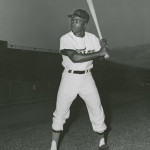
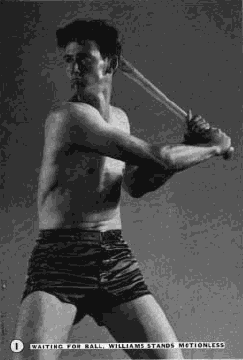
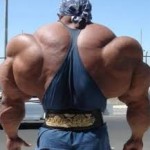
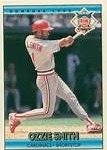
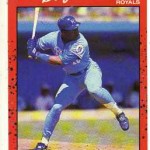
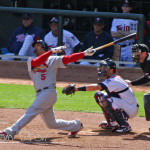
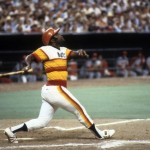
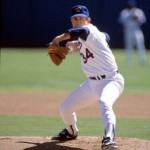
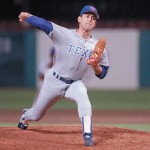
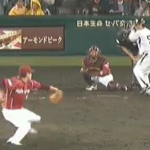
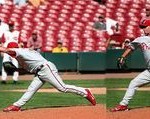
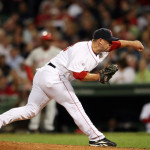
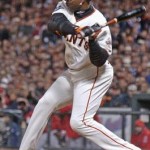
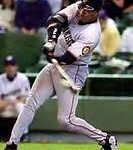
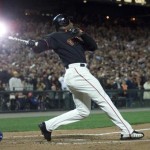

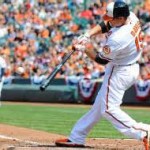
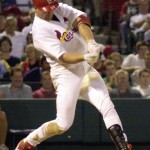




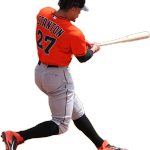
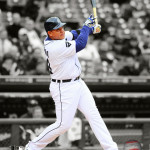







 I say this for the “selfish” reason of my being deprived of seeing him play when he is on the “disabled list” with jammed or broken fingers, hands, arms, neck, or some other upper body injury that is sure to occur at some time or other.
I say this for the “selfish” reason of my being deprived of seeing him play when he is on the “disabled list” with jammed or broken fingers, hands, arms, neck, or some other upper body injury that is sure to occur at some time or other.

 injury potential.
injury potential.







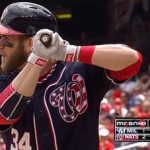

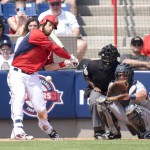
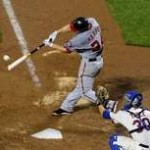


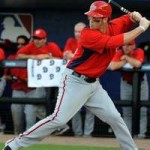

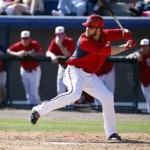
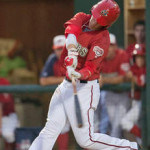
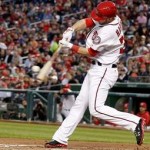
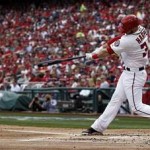
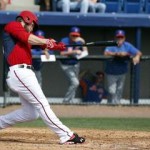
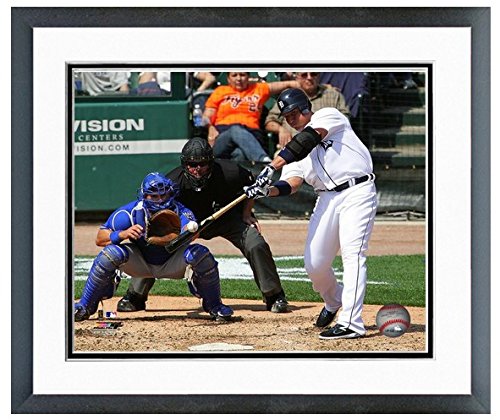
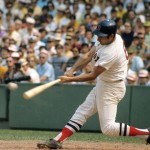
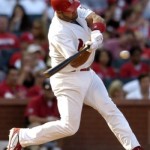
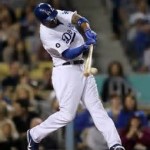
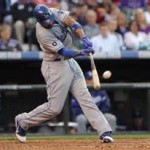
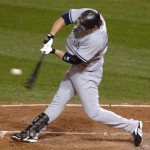
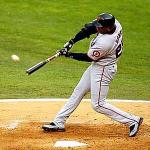
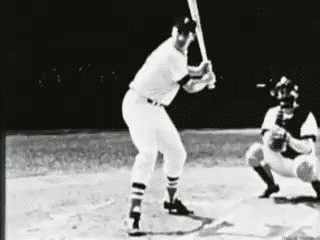
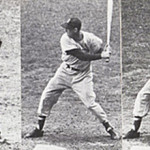
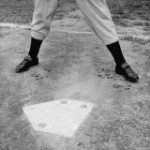
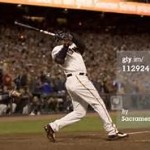


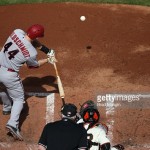
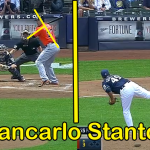
 Goldschmidt raises his front foot slightly from his starting position and immediately replaces it to the ground before the pitch is made
Goldschmidt raises his front foot slightly from his starting position and immediately replaces it to the ground before the pitch is made 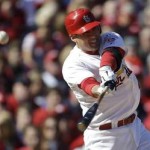
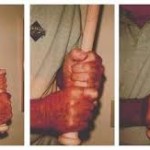 Ted Williams, Barry Bonds, Joe Morgan, Don Mattingly, Paul Goldschmidt, Hank Aaron, Tony Conigliaro.
Ted Williams, Barry Bonds, Joe Morgan, Don Mattingly, Paul Goldschmidt, Hank Aaron, Tony Conigliaro. 